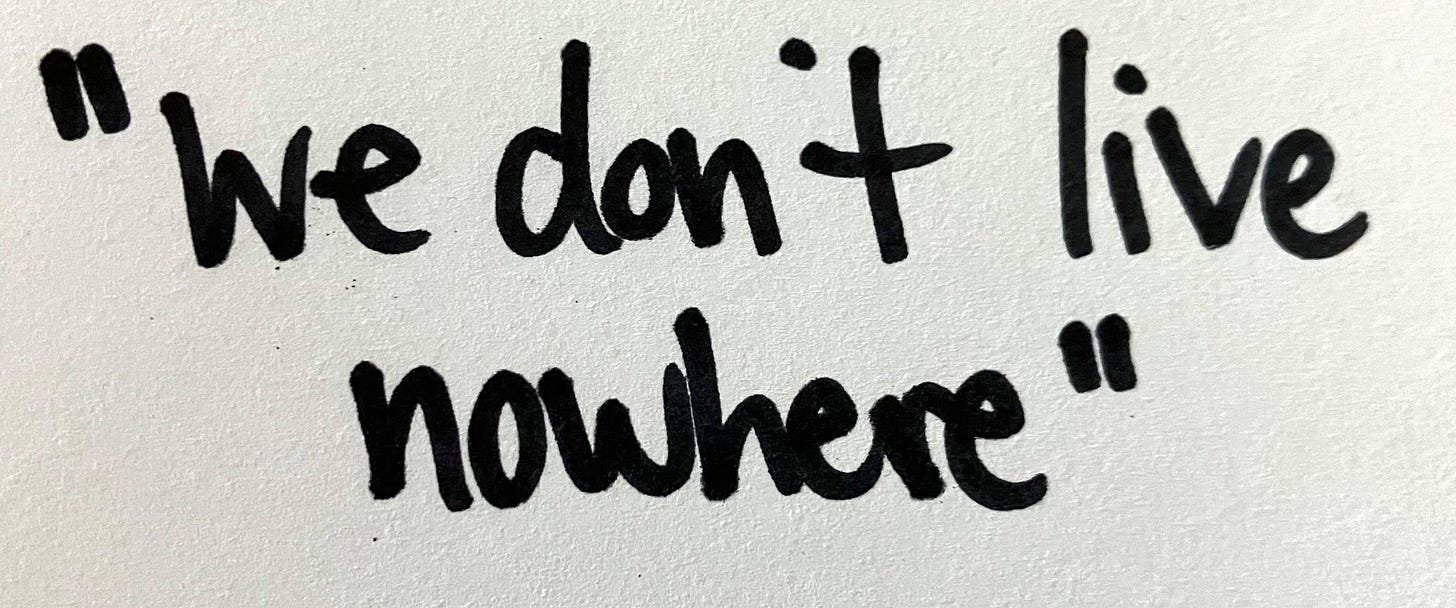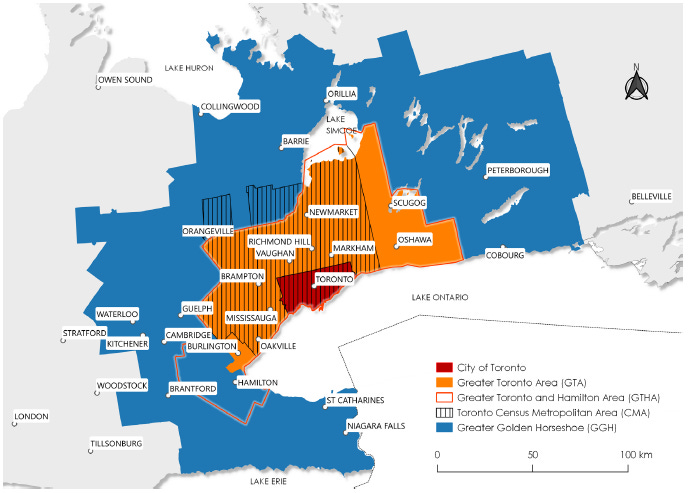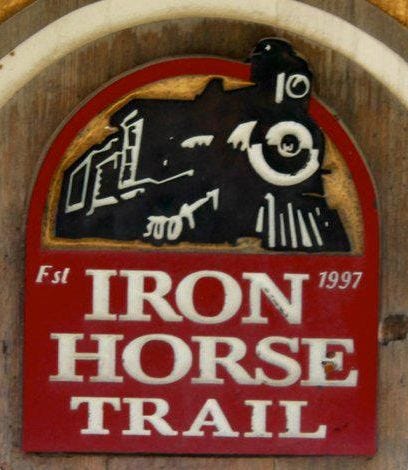Culture as Capital 5: Kitchener’s Queen Street Axis
December 14, 2024 Original Kitchener, Canada
This post picks up from where I left off in August, with Culture as Capital 4: Heritage as Commons. (See also: Culture as Capital 3: Radial Cities | Culture as Capital 2: Original Kitchener | Culture as Capital).
The idea of a year-long, watershed-wide “Culture as Capital Manifest and Homecoming” event grew out of my experience with a federal government initiative from long ago: the Cultural Capital of Canada program, which ran during the Chretien era.
The Culture as Capital concept turns the Capital of Culture idea on its head: Instead of one city looking for advantage by being designated the capital of culture of Canada for a year, I’m proposing that a unique configuration of five or more mid sized cities work together to demonstrate – or manifest – how arts, culture and heritage are part of our common wealth, in ways that any city, town, village or countryside in Canada from coast to coast to coast can also choose to do.
The aim is to come up with cultural offerings, not only for our own enjoyment, but also for invited guests from near and far, especially friends and relatives. Part of the purpose is to set precedents that other communities can adopt and adapt, each in their own special way.
The view of the place of the arts in the larger scheme of things I’m presenting here downplays culture as entertainment, as escape from our workday lives, or as recreation to replenish one's heart and soul before getting back to the daily grind. Instead of cultural “experiences” offered as products that can be bought off the rack from comfort and joy providers, the arts become, simply, part of living a full life. We’re not only talking about a kind of product or service that is provided for or presented to us, but also about what can be accomplished by us and with us.
Not that there's anything wrong with entertainment, recreation or escape from the routine. Joy on a plate is still joy, so if it comes at a price you can afford, by all means take it up. And if it's offered without charge, like most library or public gallery programs and many of those festivals that enlivened our communities over the summer, we can enjoy these as gifts, with gratitude. The point is, there's more to arts, culture and heritage than that – more than entertainment, more than escape from our workaday lives.
I would also argue that there is more to the arts as a field of endeavour than moral instruction about equity, inclusion, social justice, tolerance, environmental stewardship, or even as a means through which to become an engaged, responsible citizen. The purpose of peace, love and understanding is so that we can live joyful lives. This is also the ultimate purpose of sustainable development: so that our days, weeks, months and years here on earth can be lived to the fullest. The true measure of prosperity is the extent to which people live active, meaningful lives, individually and collectively. This is also the true measure of a good neighbourhood, a liveable city, an efficient province, a successful federation and a truly great nation or nation state.
There’s our daily bread — food, clothing, shelter. And there are the roses. Once upon a time the slogan "Bread for all, and Roses too" was used to summarize the hope and promise of the women’s suffrage movement. When women get the vote, U.S. suffragist Helen Todd assured an audience in 1910, everything was going to change – “Not at once; but woman is the mothering element in the world and her vote will go toward helping forward the time when life's Bread, which is home, shelter and security, and the Roses of life, music, education, nature and books, shall be the heritage of every child that is born in the country, in the government of which she has a voice.”

Women have had a voice in how our governments are run for more than a century now. The fulfillment of Helen Todd’s promise has been delayed by the turmoils and follies of the 20th century. But the passage of time has also deepened and enriched what was then still a narrow view of what “the Roses of life” can encompass. That promise is more valid today than ever before, and we're far better equipped for making it real than our forebears were in 1910. This year-long, watershed-wide Culture as Capital Manifestation and Homecoming event as I'm imagining it is meant to be a step in that direction.
By “manifest,” I mean making it real. Part of making it real is underscoring that art takes place, in this case, starting with the cities, towns and villages of the Grand River watershed. As emphasized in a regionalizing social media initiative recently announced by the Kitchener-based interdisciplinary arts incubator and producing organization Inter Arts Matrix, “we don’t live nowhere.” We also don’t live everywhere. Each of us live, work, learn, imagine and associate somewhere specific and distinct, just as each of us is a distinct and unique being in both nature and circumstance.
We are, however, in this together. And most of us live in relatively close proximity to one another, in towns and cities. Cultural development is a kind of community building, but in the civic sphere as well as the social. “Community” is an abstract generalization. “Culture as Capital” is a proposal for undertakings that take place in the real world, in actual towns and cities with distinct names, characteristics and histories, and real streets, blocks and neighbourhoods. In the same vein, the emphasis is on actual people, each with a name and a unique combination of origins, identities, experiences and characteristics, rather than as representatives of any general category.
“Culture as Capital” proposes a confederated initiative involving the cities, towns and countryside of the Grand River watershed, the seven Indigenous nations that are landed here, and eventually adding neighbouring Hamilton and London to the mix. This is a large area that has minimal cohesion and no civic identity other than as a section of the province or, in some areas, an extension of the Greater Toronto Area. Part of the purpose is building connections and opening lines of communication that currently don’t exist.
In previous posts in this series I’ve recommended taking a radial approach to development, from a given focal point outwards, rather than staking out territory and drawing boundaries. With the borders approach, we get stakeholders and ratepayers. From a radial city perspective, we’re neighbours, associates and fellow citizens.
There's an element of defiance here: I’m angry about provincial overreach, which can be seen as a kind of recolonization process directed out of Queen’s Park. I’m concerned about patterns of concentration and metropolitan dominance that has been part of the story here in Ontario from the very beginning. Both of these trends are proceeding at an accelerating pace, to the point where they have become detrimental to community development. That’s true here in what are thankfully still the hinterlands, but also in the impossibly congested and unaffordable metropole.
But, aggravating as these forces may be, at least Queen’s Park is still somewhere, and so is the sprawling GTA. What’s happening is that these concentrations of power are in turn being absorbed into even greater concentrations, most notably by an “Anywhere CAN-USA” style of franchised outlets, global supply chains and placeless conglomerates, and, more recently, by those nowhere/everywhere “digital behemoths” that have emerged to dominate so much of our lives. But I’m no rebel. My objective is progress towards better balance and harmony, not to disrupt, overthrow or replace an established order.
For anything like a Culture as Capital initiative to become a reality, all sorts of ingredients will have to be assembled, while a complex range of factors, wills and energies are mustered, harmonized and set into motion. This will take time. But we don’t have to wait until everything is in place to start actually doing things. The best time to begin is now. The best place is right where you are. And the best way to proceed is step by step, starting with what is immediately achievable.
As a step towards a year-long, watershed-wide “Culture as Capital” manifestation, I propose an experimental “Summer of Learning & Discovery” in an actual place: Queen Street North and South, in the heart of Kitchener.
Because coherence in the watershed and adjacent areas is so weak, the first step towards “Culture as Capital” manifested in real places is best centred around a geography that is more readily reachable in terms of communication, visibility and mobility. The terrain has to be fathomable, and it has to be walkable. There must be assets in place that can serve as a foundation to build on. And there needs to be space to move freely about, with ample room to build and grow. Kitchener’s Queen Street axis meets all these requirements.
An axis is “a main line of direction, motion, growth or extension.” Queen Street as a cultural focal point extends from the Green Gables Guest House, home of Music at Green Gables, down to where what I like to call the Preston-Berlin Rail Trail, officially known as the “Iron Horse,” crosses the roadway, and all that’s within easy reach on foot from any direction, at any point along the way.
There’s a lot to work with in this district, including:
Green Gables Guest House / Music,
KW Art Gallery,
Raffi Armenian Concert Hall, CITS Studio Theatre,
Timothy Schmalz's Fallen Firefighters Memorial,
Church of the Good Shepherd (Swedenborgian),
Kitchener Public Library Central,
Greater KW Chamber of Commerce,
Holly’s Cafe & Gallery at 27 Roy,
Apollo Cinema,
St Andrews Presbyterian,
St Peters Lutheran,
RoW Headquarters,
Registry Theatre,
Suddaby School,
Governors House & Gaol, including under-utilized porch, courtyard and garden,
Regional Archives,
Heimie Place, Hibner Green, Vogelsang Green, Goudies Lane, Siegner Lane, Clemens Lane,
Conestoga College DTK,
Speakers Corner,
SDG Idea Factory,
THEMUSEUM,
Conrad Centre, Green Light Arts,
The Walper and Crowne Plaza hotels,
three under-utilized 20th-century style parking garages,
a half-empty 20th-century style shopping mall,
The Working Centre,
Historic St Paul’s Lutheran,
St Matthews Lutheran, including the new St Matthews Centre,
Benton St Baptist,
Schneider Haus,
Victoria Park, including Lake, Boathouse, Pavilion, Museum, and Bandstand,
Queen’s Green Community Garden,
REEP House … .
With a radial approach, there is no need to set limits on what can be included, but walkability is paramount. Assets and energies within easy walking distance include:
Kitchener Market,
Willow River Centre,
Rose Cafe, Fresh Ground, Yeti, Serrinia … ,
Crushed Almond, Aura-La … ,
Globe Studios, including CAFKA, Inter Arts Matrix, Studio 38, Corner Studio,
Courtland School,
Cameron Heights,
Dallas, Wax and Elements nightclubs,
St Mary’s Roman Catholic,
Downtown Community Centre,
St John the Evangelist Anglican,
Civic Hub,
First Church of Christ, Scientist,
Matter of Taste, Pyrus, Lucero, Smile Tiger,
First Church of Christ, Scientist,
Laurier Faculty of Social Work,
UWaterloo School of Pharmacy,
The Tannery,
City Hall,
a second 20th-century style shopping mall, almost completely empty,
44 Gaukel Creative Workshop, Treehaus Collaborative Workshop,
Gaukel Block, Charles Street Terminal, Clock Tower Commons …
and, of course, that marvelous constellation of neighbourhoods that surround downtown Kitchener, including the growing number of “vertical villages” in and near the city’s traditional civic, commercial and cultural centre.
The idea is to develop a program of offerings that have an exploratory or educational component, building on what has already been accomplished and making full use of resources that are currently available within range of this Queen Street axis. It should be activities that require some effort, but that are also for enjoyment more than any kind of practical purpose or benefit. The objective is deepening knowledge and appreciation of our shared cultural inheritance in all its manifestations as an end in itself, for the enjoyment of it.
Some examples of existing programs with an exploratory element that come immediately to mind are:
Juanita Metzger's Stroll Walking Tours;
Little KW Flamenco Fest, and other CalúJules-Flamenco Plus programs;
the offerings of the Ten C Dance Company in the Market District;
Music at Green Gables;
KWAG’s Culture Talks at the Walper Hotel;
from Inter Arts Matrix, the X-Camera Talks series, and the A Hole in the Ground serial artist residency project in 2023;
our contemporary art biennials, CAFKA and IMPACT, both of which are scheduled to return to Downtown Kitchener and area in 2025,
and the rich range of learning opportunities in Irish Real Life Festival programming.
These are examples, not a complete list.
More than any of the other examples cited above or below, it was Daniel Lichti’s Art of Lied Music Festival and Mastercourse project at St Andrews Presbyterian and other Queen Street North and South locations last July that inspired my thinking in this direction, beginning almost a year ago now, when I first heard about his plans and interviewed him about them for the “community radio magazine” I send out into the world every week.
Other examples that drew my attention for their “learning and discovery” aspects as the summer unfolded include:
Open Ears 2024, a downtown highlight since 1998, which ran May 30 - June 2, and included presentations from
The Creek Collective, a kind of festival within a festival. This was followed by
the AfroVibes Festival June 8 -9, Uptown Waterloo as well as DTK, and
the Grand River Black Music Festival and Conference at KPL Central June 14 - 16.
I was out of town when Mama’s Cookout & Music Festival happened on July 13, but this project of Rufus John’s Freedom Marching initiative applying “the creative power of Art, Education & Activism” also deserves a place on this list.
Capping off an extraordinarily bountiful summer were two more presentations that struck me as full of promise:
Caribana Ignite! along King and from City Hall down Gaukel August 23 -25, the original Caribana Arts Group’s “celebration of the legacy, culture, and spirit of the Caribbean diaspora” as manifested, for the first time, in Downtown Kitchener, and
Black Talk: Hanif Abdurraqib and Antonio Michael Downing in conversation, Textile's inaugural fall literary event on Sept. 27 up in Waterloo.
To my mind, each of these happenings raised the bar in some way. As we approach the end of 2024 and the beginning of another planetary journey around the sun, let’s take stock of these kinds of accomplishments, and ask: What else belongs on this list? Could these precedents serve as a foundation for future developments?
Now is the time to start thinking about what could be added to these offerings and others like them to create a critical mass that can be presented as an experimental program throughout the May to October planting-to-harvest growing season, if possible, starting in 2025.
I’ll say more about what I have in mind in “Culture as Capital 6: Summer of Learning and Discovery.”









